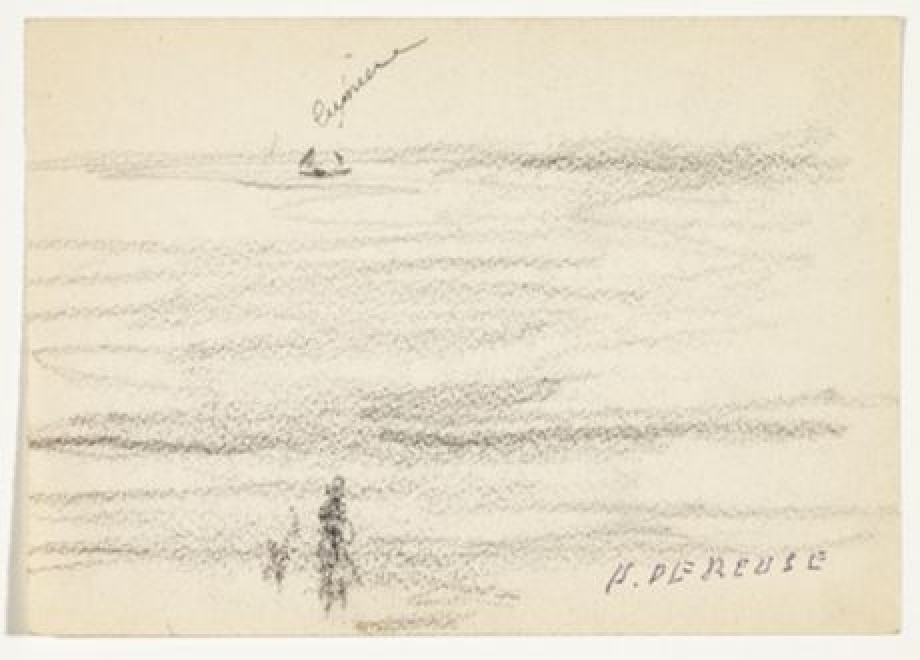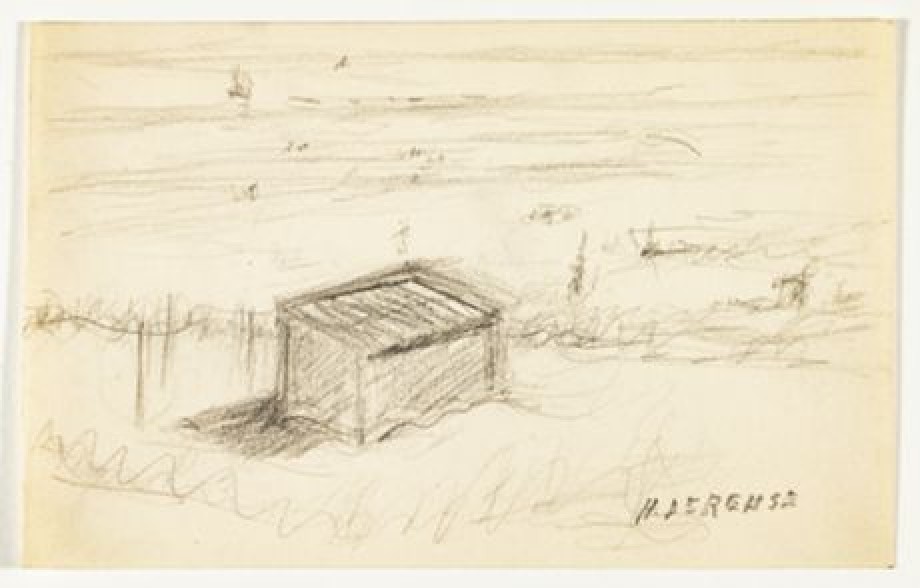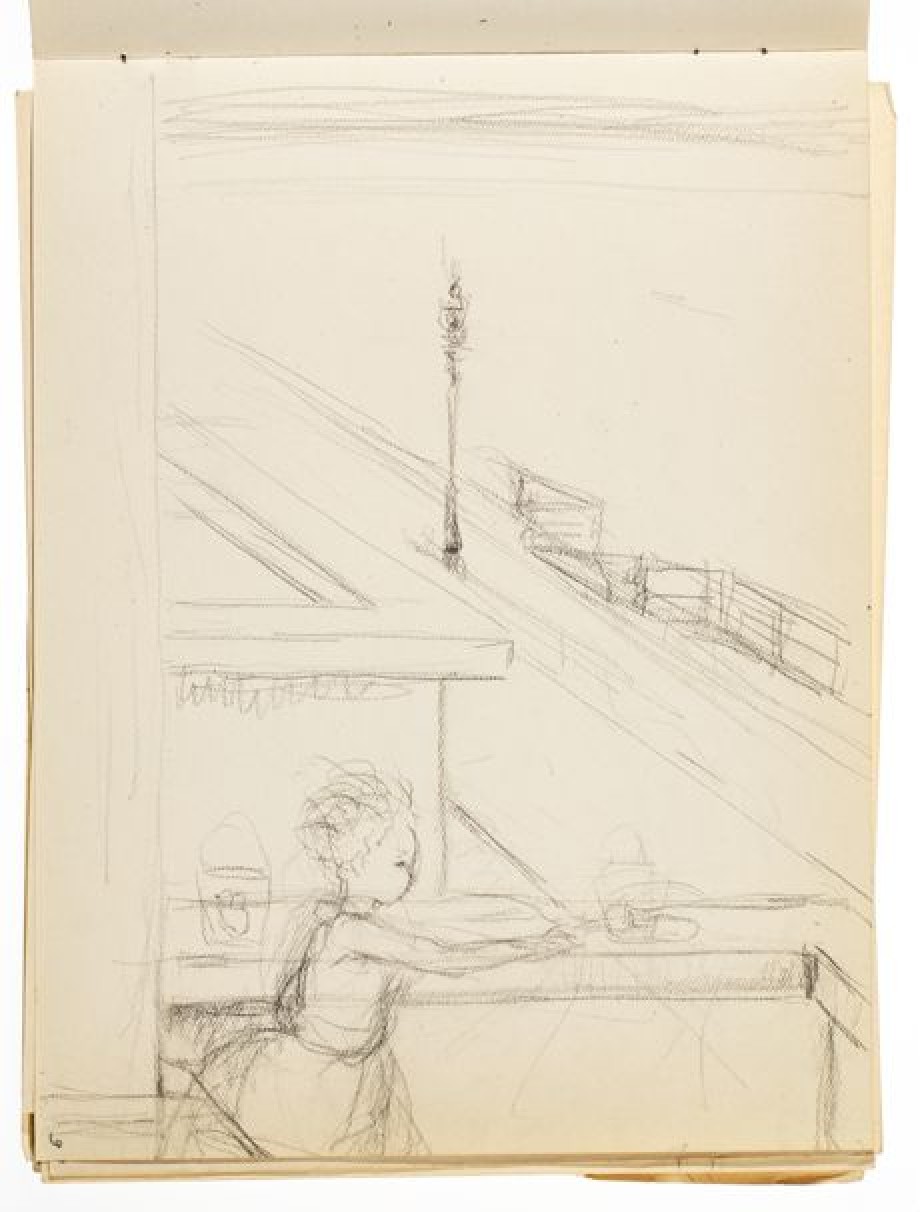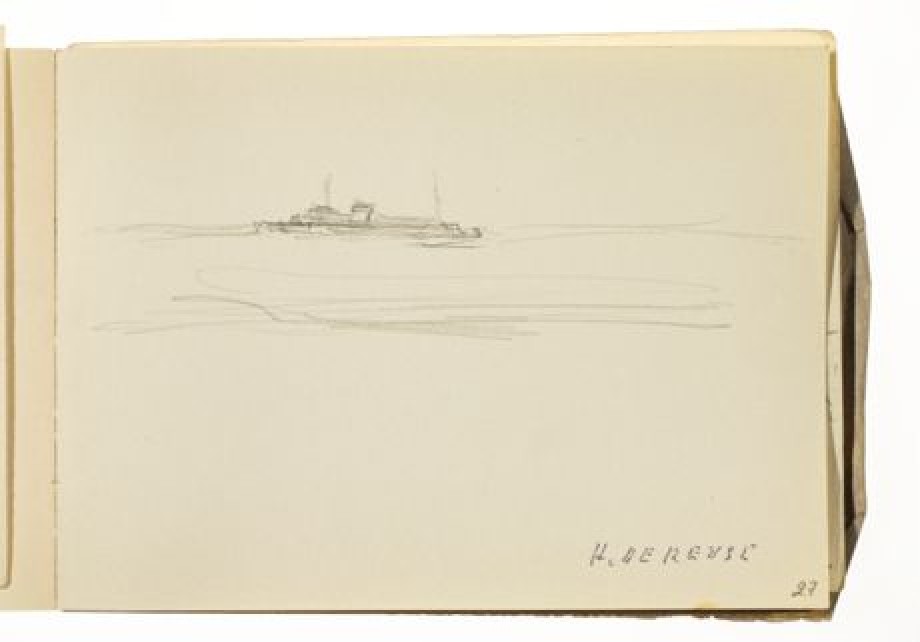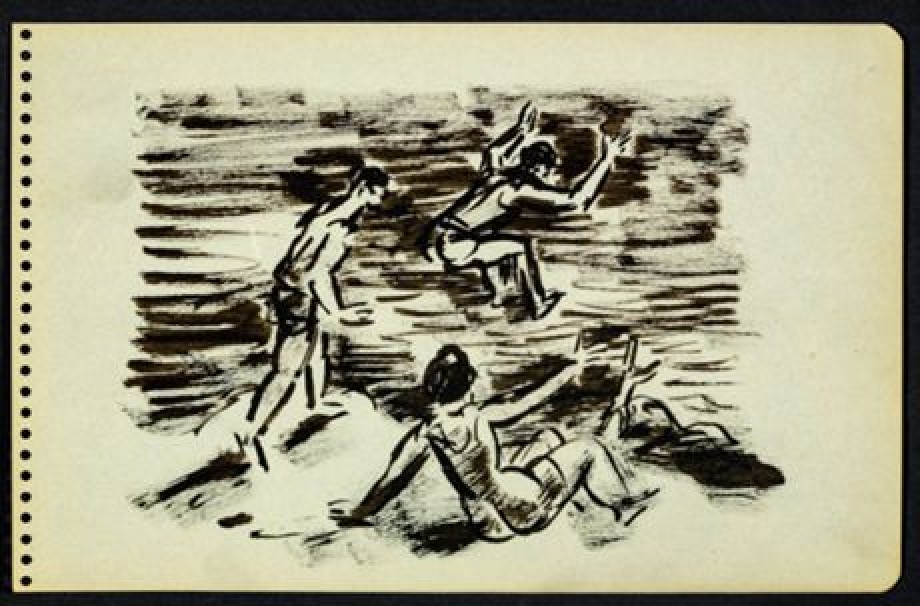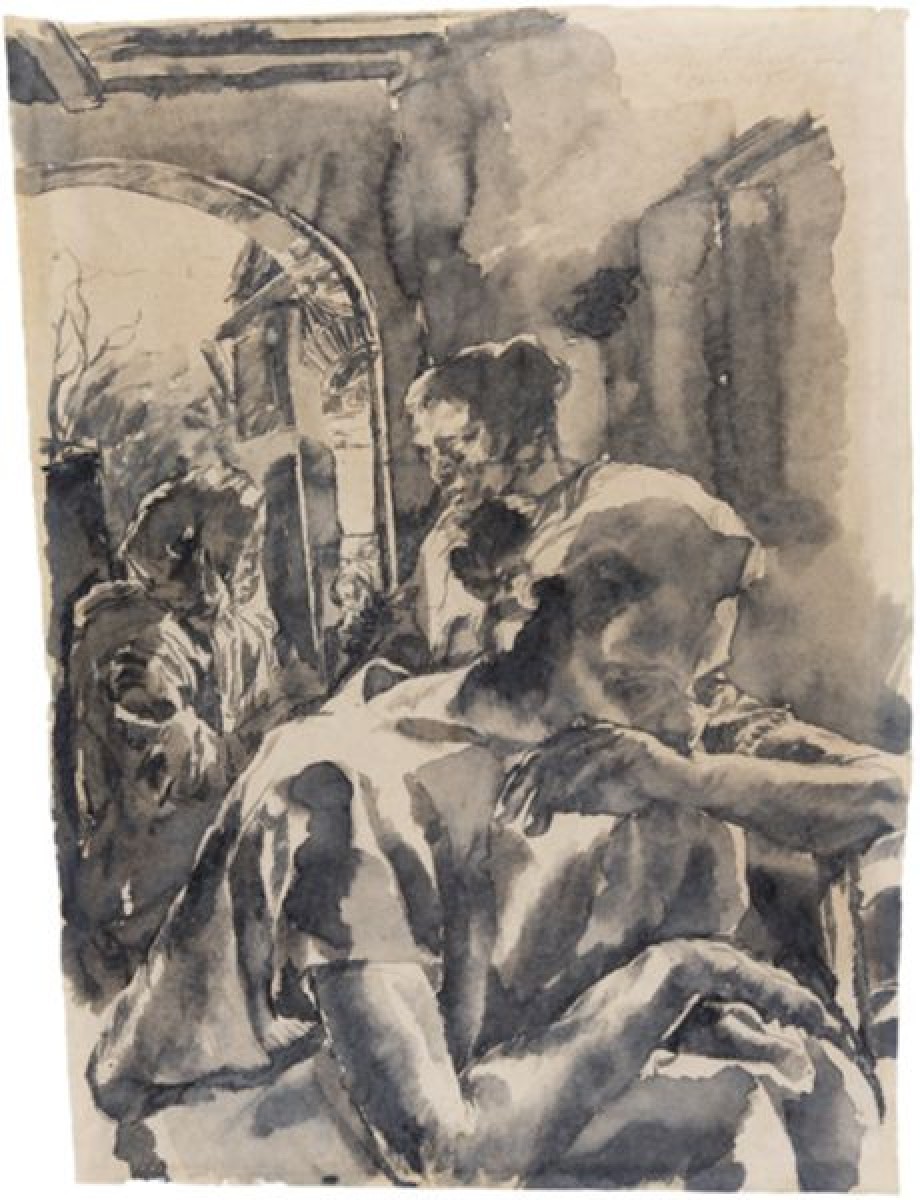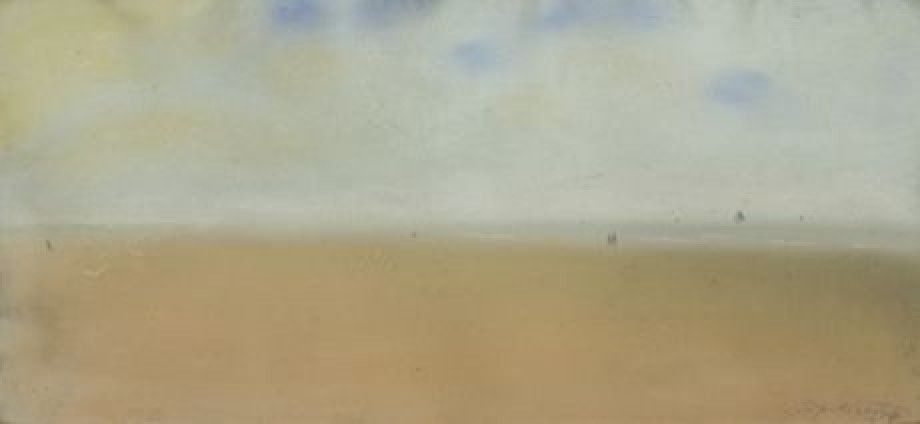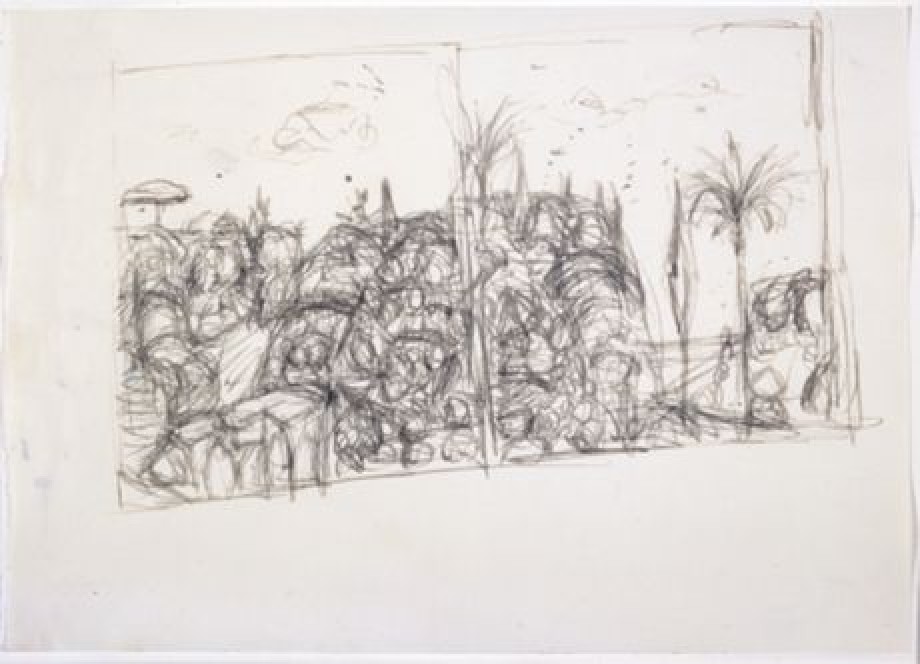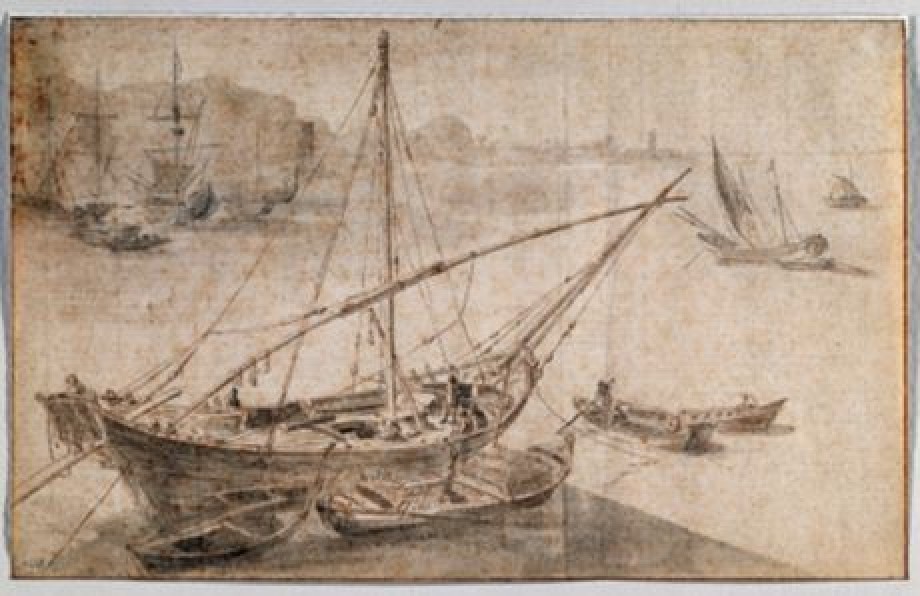The Lighthouse

Artist / maker
Leon Spilliaert (draftsmen (artists))Date
1909Period
20th centuryCollection
Museum of Fine Arts Ghent
The lavis shows the first stone lighthouse of Ostend, built in 1771 on the spot where now the National Seamen's Monument (1953-54) by Willy Kreitz stands. The lighthouse soon got the name of the 'Flagpole' because a flag was always flying on the building, a detail that did not escape Spilliaert, despite the absence of the flag. From 1860 onwards…
Read more
The lavis shows the first stone lighthouse of Ostend, built in 1771 on the spot where now the National Seamen's Monument (1953-54) by Willy Kreitz stands. The lighthouse soon got the name of the 'Flagpole' because a flag was always flying on the building, a detail that did not escape Spilliaert, despite the absence of the flag. From 1860 onwards, the lighthouse fell out of use but continued to serve as a signal tower and watchtower. In 1944, it was demolished by the German occupiers. The motif of the lighthouse was close to the artist's heart - his grandfather was a lighthouse keeper - and it appears in various works from the same period. The work comes from the old collection of Gustaaf Tratsaert (1875-1955) who was a few years older than Léon Spilliaert and had a business in colonial goods in the Witte Nonnenstraat in Ostend. Father Spilliaert's 'Grande Parfumerie' was located just around the corner in the Kapellestraat. In 1909, Spilliaert was still living with his parents. In the Almanach du commerce d'Ostende, Tratsaert is mentioned from 1909 to 1926 as 'épicier, rue des Soeurs Blanches 13'. In 1927 he moved to the place Princes Stephanie. Gustaaf was the older brother of Miss Bertha Tratsaert (1885-1963), who was much respected in Ostend because of her engagement in the Public Welfare Commission. As a municipal councillor for the Catholics she became the first female alderman in Ostend. She was also the founder of a women's mutuality, a maternity clinic and an outpatients' clinic. Nothing is known about the relationship between Tratsaert and Spilliaert, but in the family the story circulated that Spilliaert paid for his purchases with works of art.
Read less
